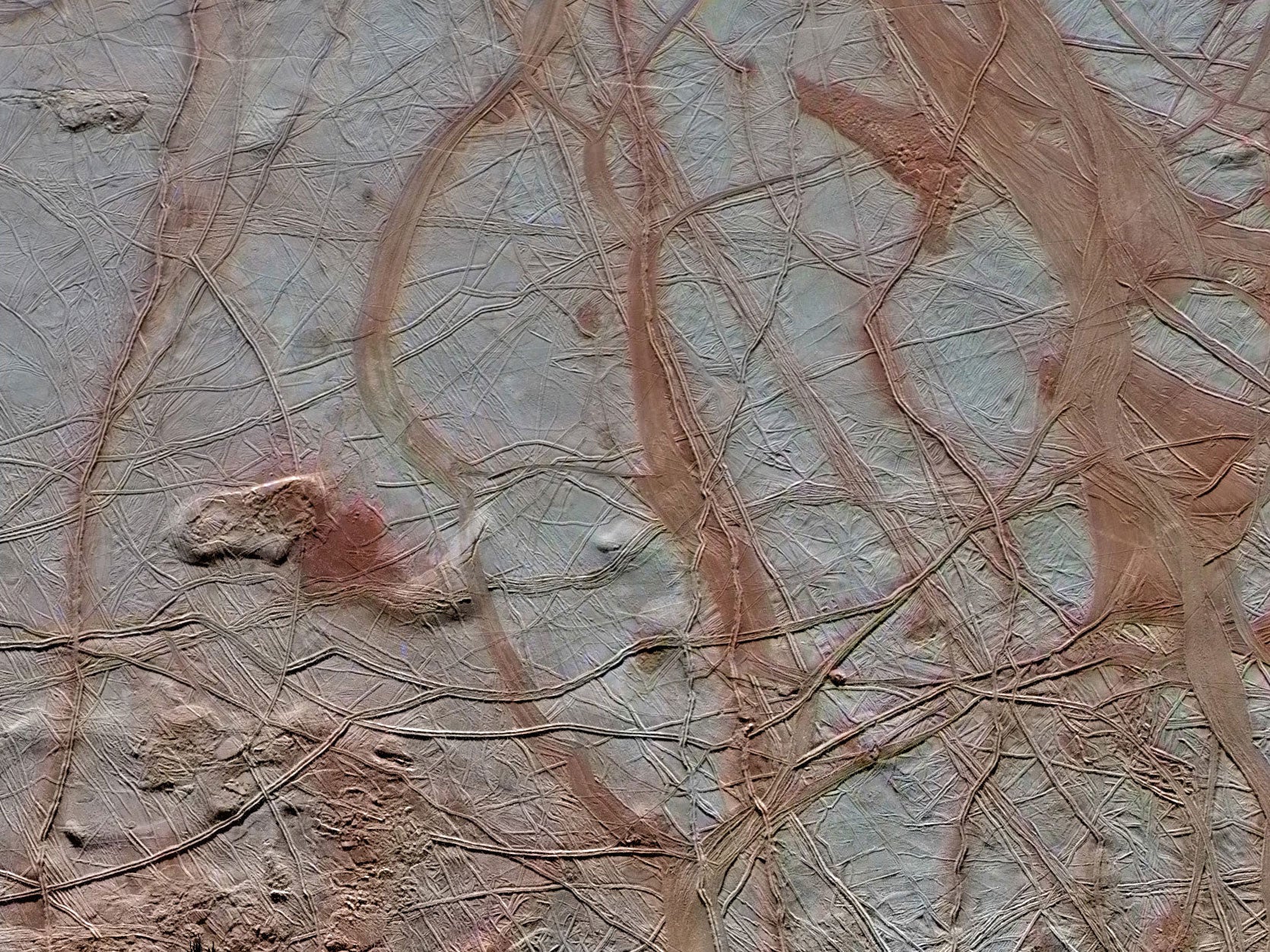Jupiter's moon Europa could have right chemical balance to support life, Nasa study finds
The Nasa team found that the ratios of oxygen and hydrogen production on Europa may be similar to those on Earth

Your support helps us to tell the story
This election is still a dead heat, according to most polls. In a fight with such wafer-thin margins, we need reporters on the ground talking to the people Trump and Harris are courting. Your support allows us to keep sending journalists to the story.
The Independent is trusted by 27 million Americans from across the entire political spectrum every month. Unlike many other quality news outlets, we choose not to lock you out of our reporting and analysis with paywalls. But quality journalism must still be paid for.
Help us keep bring these critical stories to light. Your support makes all the difference.
Jupiter's moon Europa could have the right chemical balance to support life, Nasa has said.
According to a new study, the balance of hydrogen and oxygen production on the small moon is comparable to that on Earth, meaning the core building blocks of life could be present.
The study, from Nasa's Jet Propulsion Laboratory (JPL), hinges on the theorised salty ocean of liquid water which sits underneath the moon's icy shell.
To estimate the ratios of chemical production on Europa, the team looked at how much hydrogen could be produced as the ocean's salty water reacts with rock, in a process known as serpentinisation.
During this process, which also takes place on Earth, water filters through minerals and reacts with rocks to form new minerals, producing hydrogen as a byproduct.
Using complex models based on our knowledge of Europa, the team figured out how cracks in the moon's sea floor have opened up over time, allowing them to predict how much fresh rock is made available for serpentinisation.
The estimates for oxygen production were made by studying the planet's surface. The researchers found that radiation from Jupiter could split apart the ice molecules and release their oxygen into the ocean.
In the course of their research, the team discovered that oxygen production is likely 10 times higher than hydrogen production - roughly similar to the ratio on Earth.
The study is a vital step in discovering whether the moon's ocean could harbour life. Steve Vance, a planetary scientist at JPL, said: "The cycling of oxygen and hydrogen in Europa's ocean will be a major driver for its ocean chemistry and any life there, just as it is on Earth."
Kevin Hand, another JPL researcher, compared the interaction between Europa's surface and sea bed as a giant battery which could power life in the ocean.
"The oxidants from the ice are like the positive terminal of a battery, and the chemicals from the seafloor, called reductants, are like the negative terminal," he said.
"Whether or not life and biological processes complete the circuit is part of what motivates our exploration of Europa."
The results of the study have been published in the Geophysical Research Letters journal, but we could know more soon.
Nasa is currently planning a mission to Europa, in which a probe will pass close to its surface and take high-resolution pictures.
The mission is in its early stages, but it's set to take place at some point in the 2020s. Over a number of years, the probe would gather masses of data, and by determining the composition of Europa's surface and ocean, it could help us find out whether the moon could harbour life.
Subscribe to Independent Premium to bookmark this article
Want to bookmark your favourite articles and stories to read or reference later? Start your Independent Premium subscription today.
Join our commenting forum
Join thought-provoking conversations, follow other Independent readers and see their replies
Comments